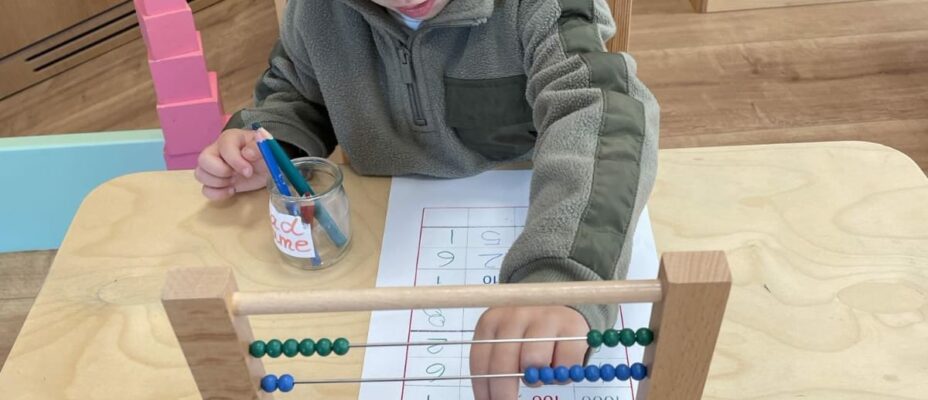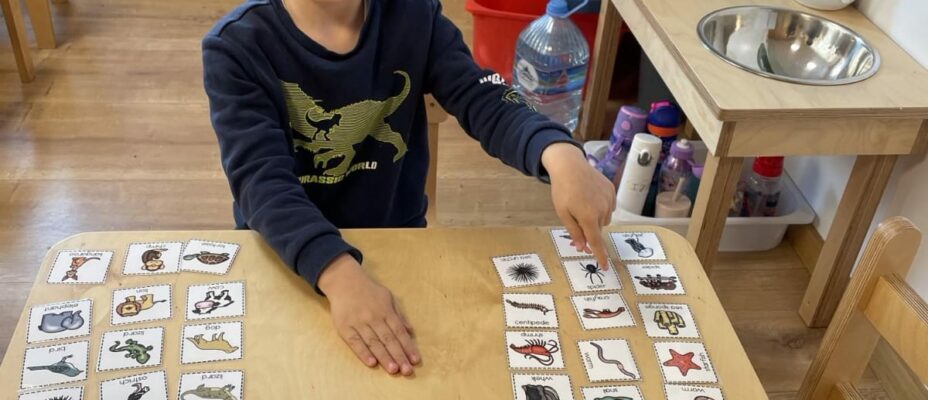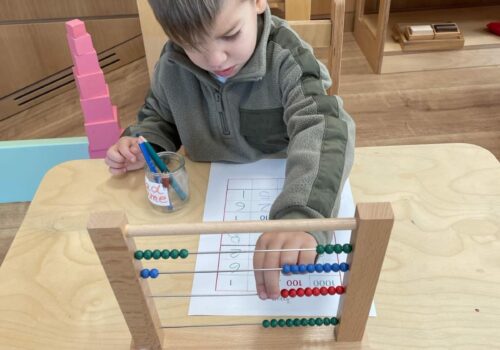









M. Marin
Lead Teacher
Parent Reviews
overview
When Dr. Maria Montessori set up her first class for children ages 3 to 7, (which she called a Casa dei Bambini – a children’s home), she observed that some activities appealed to the children more than others. The activities that engaged the children fully (or put them in a state of ‘flow,’ to use the modern term coined by psychologist Mihály Csikszentmihályi) became the basis of the international Montessori Casa curriculum for 3 to 6 year olds that is found around the globe today.
The Casa program includes:
Practical Life -
Using the child’s natural inclinations as a point of departure, Dr. Montessori structured several exercises for the classroom to help the child satisfy their need for meaningful activity. For these exercises, she used familiar objects – buttons, brushes, dishes, jugs, water and other objects found in the kitchen, which the child recognizes from his home life, helping to create a link between the home and the school. For the young child, there is something special about tasks which an adult considers ordinary – washing dishes, preparing vegetables, and polishing shoes. They are exciting to the child because they allow him to imitate adults.
‘Any child who is self-sufficient, who can tie his shoes, dress or undress himself reflects in his joy and sense of achievement the image of human dignity, which is derived from a sense of independence’
-- Maria Montessori--
Sensorial -
Brains develop through movement and information received through the senses. Maria Montessori therefore focused on giving children as many sensory experiences as possible to allow them to form strong neural brain connections. A young child meets the world around him through the constant use of all his senses. To examine a new object, a baby will look at it, hold it in his hands to feel the texture and weight, shake it, lick it, or even try to bite it. Dr. Montessori felt that this was the ideal time to give children equipment which would sharpen their senses and enable them to understand the many impressions they receive through them. Each of the Sensorial Materials isolates one defining quality such as colour, weight, shape, texture, size, sound, smell, etc. The equipment emphasizes one specific quality by eliminating or minimizing other differences. Thus, the sound boxes are all the same size, same shape, same colour, and same texture; they differ only in the sounds which are made when the child shakes them. Sensorial works also prepare a child for math, geometry, language, writing, and logical thinking
Mathematics -
Practical Life and Sensorial materials provide a strong foundation for mathematics. The knowledge gained from both these subjects carries over into the Montessori Math curriculum, where a child is able to discover math’s with a hands-on approach. Arithmetic, Algebra, and Geometry are all incorporated in the form of indirect learning, and allow a child to physically manipulate the material in order to form a concrete understanding of math’s, and make it easier to understand abstract concepts in their later school years.
Language -
To be able to read and write, a child must develop two different skills: 1) he must commit to memorizing the shape of the letters and their corresponding sounds, and 2) he must develop the muscular skill necessary for using the pencil with control. The Montessori approach allows the child to learn both the shapes and sounds of the letters in a way that is completely independent from perfection of the motor skill. Therefore, a Montessori student learns to write not by writing, but by performing several purposefully structured activities which prepare the hand both indirectly and directly for facility in handwriting. During these three years in the Montessori classroom, an exciting thing happens. After he has worked for a while with the materials, the child’s motor skills and phonetic skills (which have been developing in parallel activities) converge together. When a child discovers that his hands and fingers can form letters, and that he knows how to string those letters together to make meaningful words, he has entered what Dr. Montessori called an “explosion into writing.”
Cultural Studies / knowledge and understanding of the world -
The study of cultural subjects in the Montessori environment include: geography, botany, zoology, history, science and the arts (art and music). The cultural subjects are taught in a particular order called the cosmic approach (big picture to smaller parts) and shows how all life is interconnected and interdependent and how one cannot live without the other. It also satisfies the needs and tendencies of man helping the child to adapt to the world and understand his place in it. The main aim of the culture area is not to teach the facts of the sciences but rather to plant seeds of interest and awe in the mind of the child.
- 25
- 3
- 7:00am - 4:30pm
- Monday - Friday
- English
- 3 - 6 years
Register for your child
Let your child attend Montessori Tirana to help your child develop comprehensively in all aspects.
- +355692020436
- [email protected]
- Rruga Mustafa Xhabrahimi, 1004, Tirane

